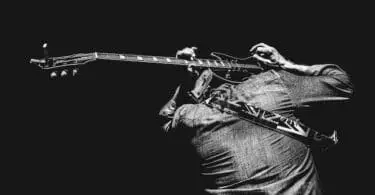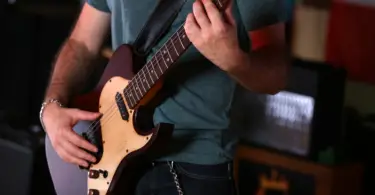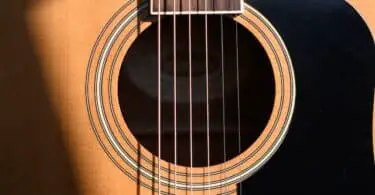It’s not a satisfying experience to play a guitar when it’s out of tune. However, once you’ve established a dependable way of tuning your electric guitar, you may begin playing and appreciate each moment.
If you want your guitar to sound fantastic all the time, then you’ll need to learn how to tune your electric guitar. The sooner you learn how to accurately tune your guitar, the sooner you’ll enjoy playing it daily.
To tune your electric guitar, you must first understand these four techniques. The first is “tuning by ear” you should learn this before anything else as it will help you throughout your career without any tuning tool.
The second is “plug-in/pedal,” which is usually used when there is a gig. The third is the “vibration-based tuner,” ideal when you are in a crowded and noisy place while tuning your guitar.
And the last one is the “microphone based tuner” this tuner picks up the sound through a microphone and will clearly show how close your strings are to be in tune. So now it’s time to prepare your guitar, choose from one of the mentioned tuner helpers, and start adjusting your guitar pegs to meet the right tune for each string.
It’s necessary to tune your electric guitar in various techniques since you never want to rely entirely on an electronic tuner. So we’ll go through how to tune a guitar with and without a tuner.
The following is a beginner’s approach to tuning an electric guitar. It describes the most popular methods of tuning the guitar and more up-to-date techniques.
Quick Links
Tuning your electric guitar the right way
A guitar’s basic tuning is E-A-D-G-B-E.
There are a few methods for identifying which note correlates to which string. It’s time to begin tuning your strings once you’ve determined the note you’ll be tuning too! This basic guitar tuning allows you to master all of the basic guitar chords and notes.
As you go, you will experiment with different tunings on but on the other hand, basic tuning will always be present as a basis and influence how you progress across the fretboard. Most electric guitarists utilize plug-in/pedal tuners, but it’s equally necessary to know how to tune the electric guitar without an amp.
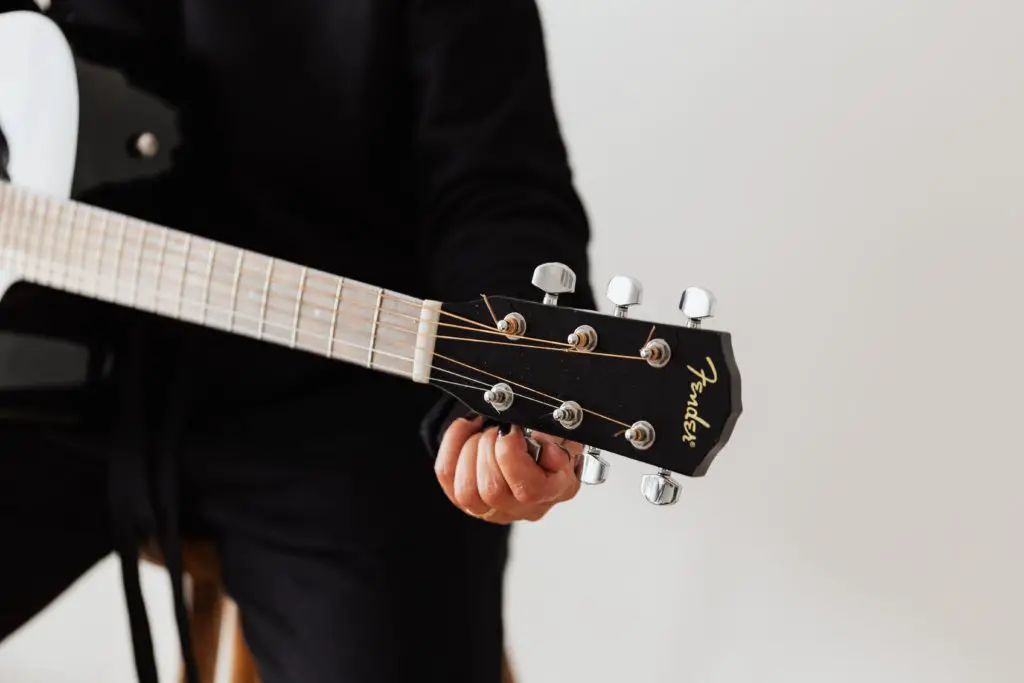
Tuning your electric guitar WITH A TUNER
Unless you want to tune your guitar more conveniently, you may use one of the various electric guitar tuners available. Several creative electric tuners have been designed throughout the years and make your tuning experience more convenient and more accurate.
Plug-in/pedal
If you want to play electric guitar on stage or in your actual gig, plug-in or pedal tuners may be the best solution. While you can use vibrations and microphone-based tuners on any guitar, plugin/pedal tuners are specially developed for electric guitars.
A jack lead is used to connect the electric guitar. Its interface will indicate how near each string is to be in tune using a needle or light. The problem with electric guitar tuners is that they are often more costly than vibration or microphone-based tuners.
I suggest you check the BOSS TU-3 Tuner as it is among the most popular plugin tuner for electric guitar. It will help you tune your guitar with ease.
BOSS TU-3 Tuner (TU3)
Vibration-based
Whether you are concerned about tuning your electric guitar in a loud environment, you consider utilizing a vibration-based tuner. These tuners attach to the guitar’s headstock and sense the tune of each note through vibrations.
Most of these clip-on tuners are compact and convenient, and the needle and interface generally light up to indicate whether you are already in tune. Using a vibration-based tuner is a fast and simple way to tune your electric guitar.
I suggest you check the Fender FT-2 Professional Clip-on Tuner, among the most popular vibration-based tuner for guitar. It will help you tune your guitar with ease.
Fender FT-2 Professional Clip on Tuner for Acoustic Guitar, Electric Guitar, Bass, Mandolin, Violin, Ukulele, and Banjo
Microphone-based
Microphone-based tuners are an excellent addition to your guitar accessory toolkit. They’re very helpful when tuning an electric guitar. As the name implies, these tuners use a microphone to pick up the audio of each string. Most feature an easy-to-use interface and an indicator that displays how near your string is to get into tune.
They are readily available and, for the most part, affordable. Whenever it comes to tuning your electric guitar, the easy display and simple application make it the ideal entry point for a newbie.
I suggest you check the Korg CA-50; it is among the most popular microphone-based tuner for guitar. It will help you tune your guitar with ease.
Other Tuner (CA50)
Tuning your electric guitar WITHOUT A TUNER
Tuning your guitar by ear is the most basic guitar tuning technique and is the most interesting skill for beginners to master. You will improve your ability to identify pitch, as well as your understanding of harmony.
You are tuning the guitar to itself using this approach. It is critical to learn to tune the guitar in this manner because it improves your ear’s ability to perceive pitch changes and its connections between notes.
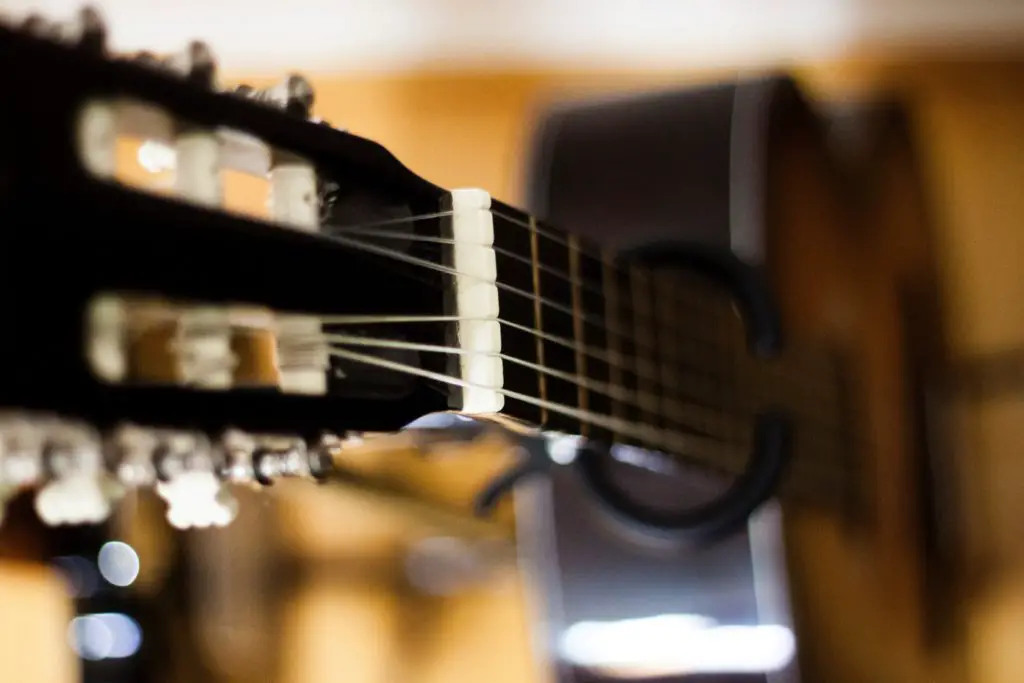
Step-by-step guide on tuning your guitar without a tuner:
You will tune the guitar by turning the pegs on the headstock’s side. So, before you start tuning the guitar, check your pegs and become comfortable with how they work. It should be the same whether you’re tuning an electric or acoustic guitar.
- Low E string: to use this approach, the low E string must already be in tune. It’s a great idea to compare your E string to the E string of a piano. If you don’t have a piano, your benchmark pitch might come from another guitar.
- A String: make an A by playing the 5th fret on the Low E string. Adjust your A string toward this tone; it should sound identical. It is the technique that will be utilized to tune the remaining strings.
- D String: hit the A string’s 5th fret. Adjust your D string to this tone; they should sound identical too.
- G String: adjust the G string using the same way as the A string.
- B String: to tune the B string, the technique varies somewhat. For example, to get the right pitch for the open B string, instead of tuning the B to the 5th fret of the G string, play the 4th fret.
- High E String: we stick to the previous 5th fret approach to adjust the high E string.
Considering the frets, keep your thoughts that this approach is also known as the ‘55545.’
When the guitar has six strings, you should use this approach to maintain it in the right tune. Several people may understand easily than others. Although if you fail at first, it is a skill set worth developing.
After learning how to properly tune your electric guitar with and without using a tuner, let’s now learn how to use a tuning app.
Tuning your electric guitar using an App
You also might be interested in learning how to tune your guitar using an app. If you have an electric guitar and then a smartphone, you only need to know how to use a tuning app. Finding an appropriate app could make a significant difference whether you’re attempting to set up an electric guitar before a show or when you’re on a tight schedule.
Several tuning applications are downloadable on the Apple and Android app stores. However, it is occasionally necessary to spend a little money to guarantee that you access a tuning application that is dependable, quick, and simple to use.
I tune my electric guitar before initiating practice or a session using the Guitar Tricks app. This app’s tuner contains actual guitar tones, allowing you to hear how each string sound.
The program is dependable, and the user interface is simple. It is a simple software that will do the work for your electric guitar. So, you might want to check it out from your google play or app store.
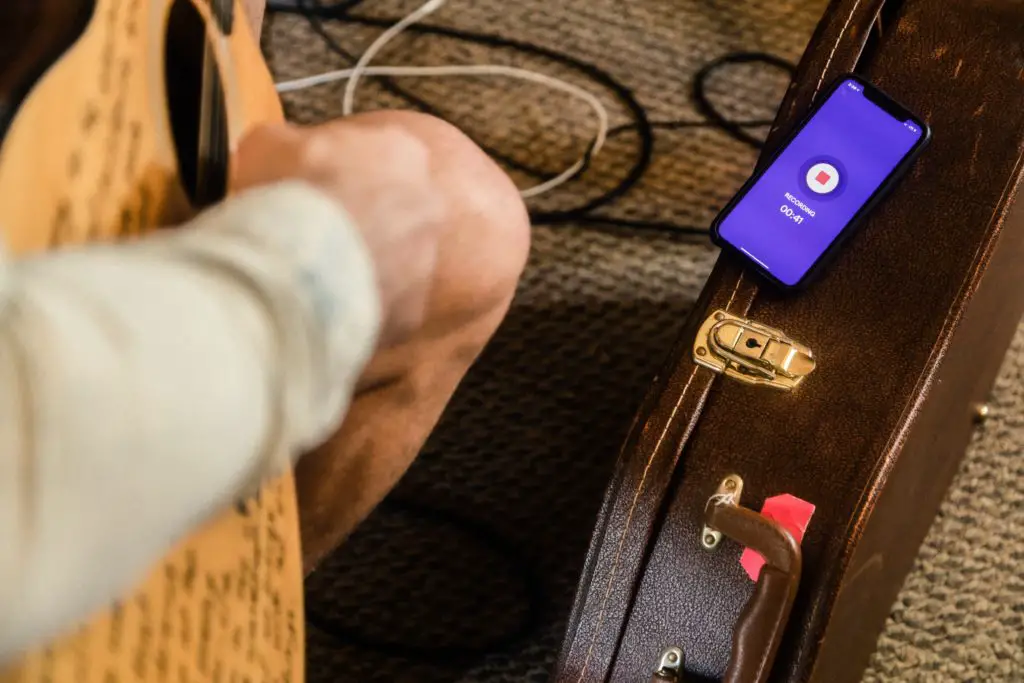
Some Final Words
All the suggestions I’ve provided above should assist you in learning how to tune your electric guitar. However, tuning your guitar without a guide can be a challenging especially for beginners.
Now that I’ve shown you how to tune a guitar in several different ways, all you need to do now is to involve yourself in a never-ending practice. Of course, it will require some work and effort at first, but in no time, you will be able to tune your electric guitar in a couple of seconds during a performance, just like the experts.

